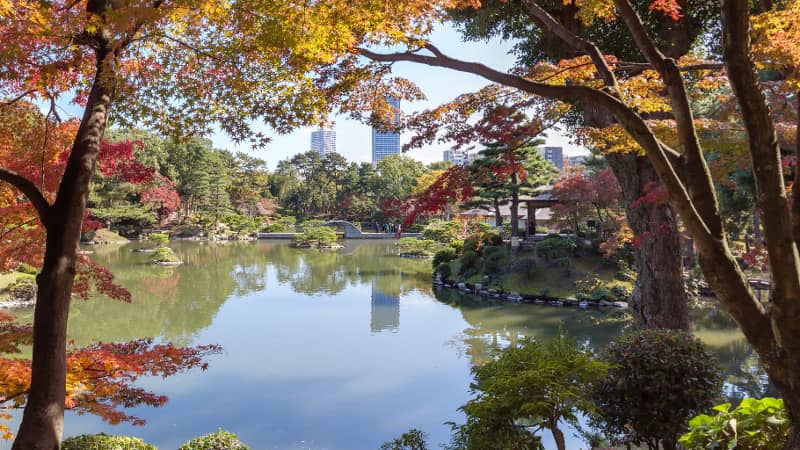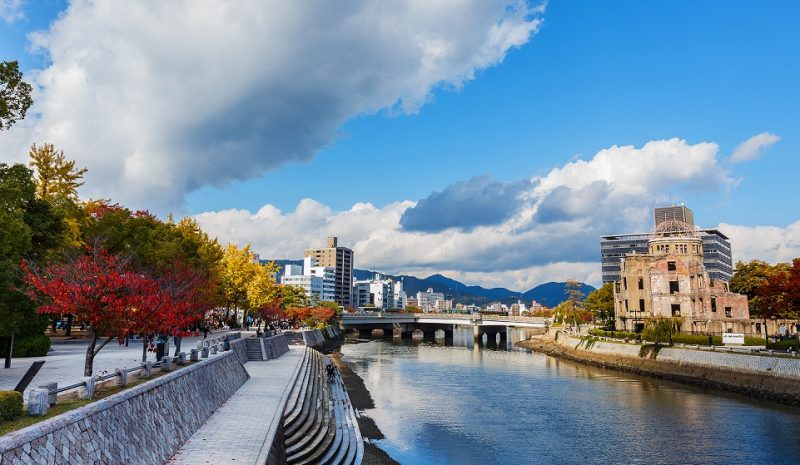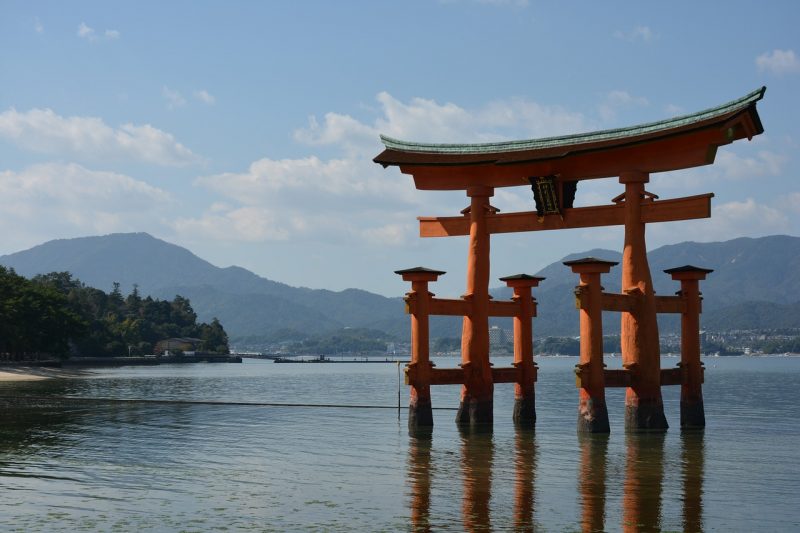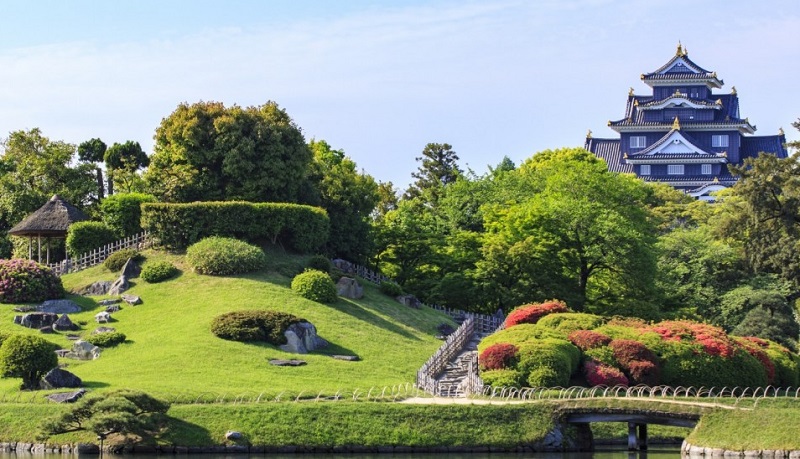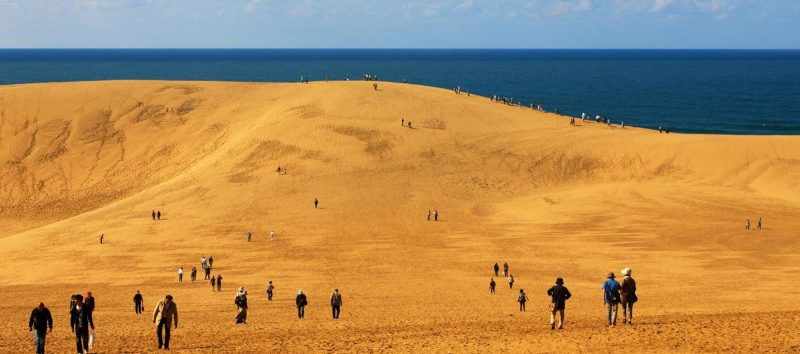The Chūgoku region is one of the regions of Honshu — the largest island that makes up Japan.
Chūgoku includes the modern and cosmopolitan city of Hiroshima and the pretty garden-filled city of Okayama. It is also home to some of Japan’s most beautiful and iconic temples and buildings, including the Itsukushima Shrine on the island of Miyajima.
Although it is located in the south-west, the meaning of “Chūgoku” is “middle country”. There are a few different theories as to how it got this name, including being halfway between the old capital in Kyoto and the island of Kyūshū.
It includes most of the historical Sanyo region and Sanin region and is sometimes still referred to as the “San’in‐San’yō region”.
You can easily explore the Chūgoku region using a JR Pass — in fact, you can even use this to take the ferry to Miyajima! You can find a full guide to the best destinations in Chūgoku below.
Table of Contents
Chūgoku prefectures
The Chūgoku region is made up of 5 prefectures. All are located in the south-west of the island of Honshu. The prefectures of Chūgoku are:
- Hiroshima — Home to the city of Hiroshima, the region’s largest city and famous as one of the places hit by an atomic bomb, as well as the Seto Inland Sea and forested mountains.
- Okayama — Known for its impressive black castle, beautiful gardens, and historic canals of Kurashiki.
- Shimane — With a rich culture and mythology, you can see Iwami Kagura folk dancing, visit castles and shrines, and explore the Iwami Ginzan Silver Mine
- Tottori — Unspoiled and traditional, this prefecture has a number of onsens, a rugged coastline, and the unique environment of the Tottori Sand Dunes.
- Yamaguchi — located at the far south-west of Honshu, you can explore Japan’s largest limestone cave, journey to hidden shrines, and find some of the best seafood in the country in this prefecture.
Top destinations in Chūgoku
Much of Chūgoku is rural, with rolling hills, forests, and stretches of wild coastline. There are also some large cities and smaller towns and villages. The biggest metropolitan areas are Hiroshima (population: 1.2 million) and Okayama (population: 720,000).
Some of the most popular destinations in the Chūgoku region include the following:
Hiroshima
Hiroshima is a city with deep historical roots, evident in its ancient gardens and castles. During the 20h century, Hiroshima became the center of unenviable international attention after the first atomic bomb was detonated there on August 6, 1945 – destroying everything within two kilometers of impact.
Like the phoenix of legend, Hiroshima and its residents emerged from the ashes. Historical structures were restored, and the city took on aspirations of continued peace. Today, it is home to over one million people and a favorite stop for international tourists, thanks to the bullet train.
Miyajima
Miyajima means “shrine island.” This small island has been a sacred place of worship since ancient times, where the gods were thought to live in harmony with mortal man.
The Itsukushima Shrine and its Torii Gate have been declared a UNESCO World Heritage Site, and have been celebrated as one of the Three Views of Japan since 1643.
Okayama
Okayama is a city where history meets modern technology. It originated as a castle town during Japan’s Edo Period, which spanned from the early 1600s to mid-1800s. Today, Okayama is the second largest city in the region, being somewhat smaller than Hiroshima. It is a railroad transportation hub, located at the junction of the Sanyo Shinkansen Line to Shikoku’s only rail connection.
What is there to see and do in Okayama and the surrounding cities? How do you get there from popular destinations such as Tokyo and Kyoto? Consider this helpful travel guide.
Best things to do in Chūgoku
Chūgoku has a wide variety of places and things to see and do. Breath in the natural beauty of its coasts and forests. Enjoy the cosmopolitan glitz of cities like Hiroshima. Experience the cultural wonders of the region’s shrines and temples.
Some of the greatest attractions in Chūgoku include the following:
Tottori sand dunes
Your mental images of Japan likely include such scenes as cherry blossoms swaying in the breeze, steam rising from relaxing onsens, and the majestic Mount Fuji. A trip to Tottori, however, will introduce you to a very different and unexpected side of Japan.
Main train lines and transportation
The Chūgoku region is served by a number of transport links. These include Shinkansen (bullet trains), other trains operated by Japan Railways, and ferries.
When staying in Chūgoku, you can use the following types of transport to visit attractions in the region:
- Sanyo Shinkansen
- Hello Kitty Shinkansen (Sanyo Shinkansen)
- JR Miyajima Ferry
Other regions of Japan
Japan is made up of 8 regions. These are further subdivided into 47 prefectures.
The islands of Hokkaido, Kyushu, and Shikoku each form their own region, while the largest island, Honshu, is divided into 5 separate regions. Okinawa Prefecture is sometimes treated as a 9th region, but is officially part of Kyushu region.
Apart from Chūgoku, the regions of Japan are:
